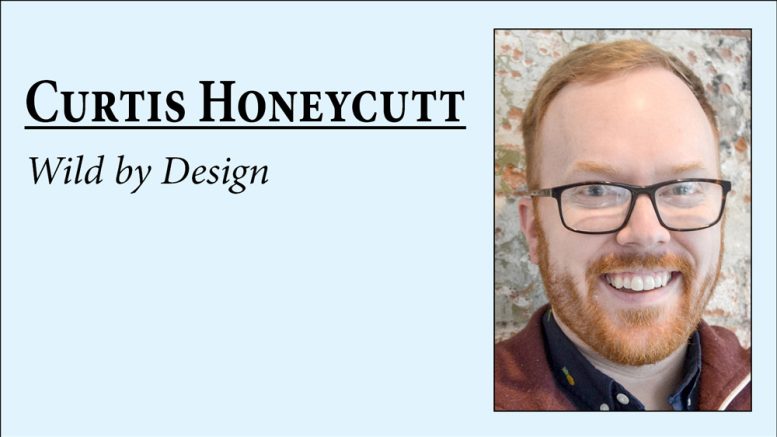Have you dreamed of transforming your backyard into a vibrant haven for butterflies, bees, and beneficial pollinators? The idea of a lush wildflower meadow teeming with life is certainly captivating. The “No Mow May” movement has gained traction in recent years, encouraging homeowners to stop mowing their lawns for the entire month to promote wildflower growth and support pollinators.
It’s important to understand that most of our yards simply aren’t meadows waiting to happen. In the U.K., where No Mow May was established, lawns are much more likely to harbor seeds of native wildflowers compared to U.S. lawns. These wildflowers may have been present in the soil for years, waiting for the right conditions to germinate. Leaving a typical U.K. lawn unmowed in May allows the potential for wildflowers to emerge and bloom.
However, typical U.S. lawns are monocultures, dominated by a single type of non-native grass. Beneath the surface lies a seed bank unlikely to yield any native wildflowers. Stopping mowing for an entire month can lead to negative consequences, including allowing invasive weeds to grow and thrive. In addition, your neighbors will likely consider your unkempt lawn an eyesore and a potential H.O.A. violation.
I’d like to suggest some realistic alternatives to No Mow May and the motivations behind each option.
“Mow Less” May
You can encourage better lawn health by embracing a “mow less” or “mow higher” philosophy. A simple adjustment like raising your mower deck by an inch can make a big difference. Taller grass shades the soil and helps to retain moisture. Instead of mowing your lawn weekly, stretch your timeline to every 10 days. This allows your grass to grow taller, promoting a healthier lawn.
“Night Mow” May
Did you know that mowing your lawn in the evening can make a surprising difference for air quality? Ground-level ozone, a pollutant linked to respiratory problems, forms when sunlight interacts with certain chemicals in the air. By mowing after 7 p.m., you avoid adding to these chemicals during peak ozone formation times. Evening also brings cooler temperatures and often winds that help disperse any remaining emissions.
“E-Mow” May
Gas-powered lawnmowers contribute significantly to air pollution. According to the E.P.A., gas mowers account for 5 percent of the air pollution in the U.S. Each hour of operation from a gas-powered mower can emit as much pollution as 11 cars running for the same amount of time.
Transitioning to an electric mower is a win-win for your lawn and the environment. Modern electric mowers feature advanced brushless motors that deliver performance comparable to gas-powered mowers. Lithium-ion battery technology has also come a long way, offering longer run times on a single charge. Plus, electronic lawn mowers are significantly quieter, allowing you to mow at your convenience without disturbing your neighbors.
“Cool It with the Chemicals” May
Every year, U.S. homeowners apply an estimated 80 million pounds of synthetic pesticides to their lawns. These chemicals spell doom for pollinators.
Instead, consider organic weed control methods like hand-pulling weeds. These methods may require more effort but are better for your lawn, the environment, and the delicate balance of your backyard ecosystem. For natural fertilizer, I use products from Sunday Lawn Care. Its fertilizer feeds and strengthens lawns without harmful chemicals.
And while the allure of a mosquito-free backyard is understandable, traditional mosquito control methods do more harm than good. These sprays, even those marketed as “all-natural,” often contain chemicals derived from plants like chrysanthemums. These may sound harmless, but their extracted versions – pyrethroids – are insect neurotoxins. This means they kill not just mosquitos, but also a wide range of good insects like bees, butterflies, and ladybugs. It’s also highly toxic to birds when inhaled.
Enjoy a mosquito-free porch with a simple tip: use an electric fan. Mosquitos are weak fliers and struggle to land in a strong breeze. A fan can create a gentle wind current around your patio or seating area, making it difficult for mosquitos to land on you.
“Less Lawn” May
This is, in my opinion, the most impactful change you can make to benefit your home landscape this month. Maybe you have a section of your lawn that you don’t like to mow. Good news – you don’t have to do it anymore if it’s not there! Grab a shovel, dig up an area of grass, and replace it with some attractive native perennials and mulch. Native plants are perfectly adapted to our region’s climate and soil conditions, requiring less water and maintenance once established.
The “roots” of No Mow May are admirable but, in reality, we can make some adjustments to make an even bigger impact on the environment in our yards. Consider one of these changes for your lawn to make your patch of land a healthier, more vibrant place to live.
Curtis Honeycutt is a Noblesville-based columnist and author. Send him your questions, comments, and suggestions at curtis@curtishoneycutt.com.


Be the first to comment on "Rethinking No Mow May"